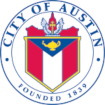
City of Austin
FOR IMMEDIATE RELEASERelease Date:
Contact: Communications and Public Information Office Email
Austin City Manager Spencer Cronk has published an end-of-year review marking the year Austin roared back to life
Austin City Manager Spencer Cronk has published an end-of-year review summarizing the City of Austin’s work serving the community during 2022, and laying out the city’s progress as one of the nation’s strongest municipal economies following the trials of COVID-19 and recent extreme weather.
View the City of Austin’s Year in Review 2022
In contrast to 2020 and 2021, when the City was responding to cascading effects of the pandemic and natural disasters, this year Austin roared back to life welcoming international events like SXSW, Austin City Limits, and Formula 1, drawing so many visitors that the Austin Bergstrom International Airport recorded its largest-ever passenger numbers.
“Even though this year offered its own roller coaster ride, I’m excited that we were fortunate to experience a significant boost to our local economy and special events industry, helping the city reach new heights beyond those achieved prior to the pandemic,” said Cronk. “While nobody would risk predicting a normal 2023, it’s clear we’re in a strong position to build on this year’s achievements and do whatever we can in the months and years to come to ensure Austin remains a city for everyone.”
The Year in Review highlights a number of ways in which the City of Austin government, with support and leadership from the Austin City Council, was able to make progress addressing some of the key challenges facing the city:
-
In partnership with Austin Transit Partnership and CapMetro, work began on Project Connect, the new high-capacity transit system that will transform the way people move around the city, with millions of dollars disbursed to non-profits to tackle displacement of families in nearby neighborhoods.
-
Sixty-three new officers joined the City’s police department having completed a reimagined, community-focused academy based on a curriculum centering diversity and equity. Along with 78 new firefighters and 65 new medics, the City is gradually replenishing its public safety staffing levels.
-
The City created more than 400 income-restricted homes and, through the Austin Housing Finance Corporation, awarded approximately $86 million to fund nearly 1,500 new income-restricted units in the coming years.
-
City workforce development training programs helped equip 930 Austin workforce development trainees with new skills, with 33% of them moving from poverty to middle-skill jobs.
-
Collaborative efforts and strategic investments to address homelessness continued to pay dividends. Over 200 people experiencing homelessness relocated from high-risk encampments to bridge shelters; the community now has over 1,000 dedicated rental units in the planning or construction phase; and the City awarded funding to 21 non-profit organizations to expand their capacity to provide services that address homelessness.
-
The greening of Austin progressed with the construction of four new urban trail segments – Northern Walnut Creek Trail Section 3A, Violet Crown Trail North, Copperfield Connector Trail, and MoKan Trail – that will add to Austin’s existing network of over 60 miles of urban trails and make it easier to get around by foot or bike.
-
Innovative responses to medical emergencies prevented unnecessary transports to local emergency rooms (ERs). Medics responded to almost 1,000 people experiencing a mental health crisis, preventing 550 transports to the ER.
-
To improve community resilience before, during and after a disaster, the City identified six pilot sites to serve as Resilience Hubs in Austin’s Eastern Crescent in collaboration with community partners. The pilot program will test activation protocols, locations, space and resource capabilities, and help determine how the future of community-led resilience will look.
This year’s achievements came despite a number of challenges ranging from an uptick in COVID-19 cases in the early months of the year, the arrival of Monkeypox, another winter storm in February, and increasing numbers of residents struggling in the face of inflation and rising housing costs.
Cronk cautioned that while Austin’s larger-than-normal rate of growth was a sign of a successful city, it also created pressures that had to be addressed.
“While the Austin region is the fastest growing metro region in the country it does not have enough housing to keep up with the amount of demand from our existing and new residents,” he said. “Looking ahead, we recognize the need to ensure growth is equitable and balanced, providing access to affordable housing and mixed-use communities.”
Cronk stated that the City had positioned itself well by serving as a leader and champion in creating and encouraging well-paying jobs with good benefits in the region, and putting forward successful large bond projects to help mitigate growth impacts. Those projects include a $350 million affordable housing bond, approved by voters in November 2022, which will provide funding for the creation, rehabilitation, and retention of affordable rental and ownership housing.
Across the metro-area though, successfully accommodating future regional growth will rely on the collective preparation of Austin and surrounding cities and counties to accommodate increasing demand on infrastructure and resources.
“Every jurisdiction in Central Texas has a role in solving the region’s growth challenges in the years ahead, and I look forward to working with area leaders towards our common goals,” Cronk added.
View the City of Austin’s Year in Review 2022
